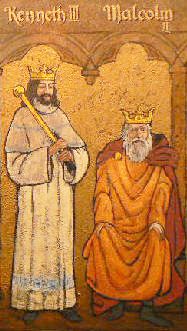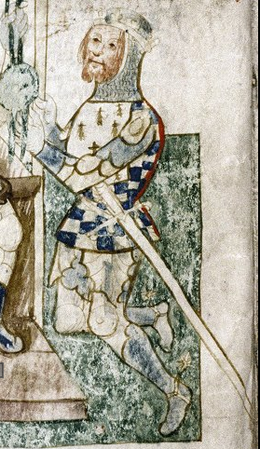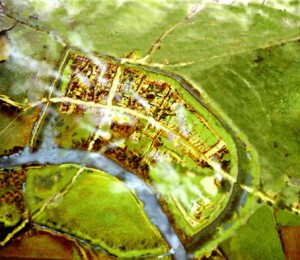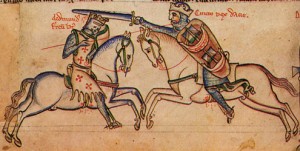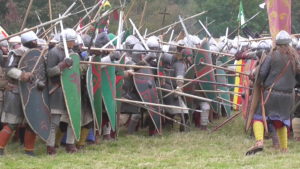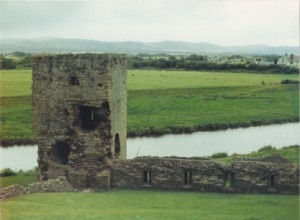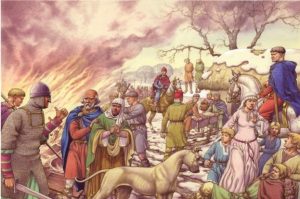
After the trauma of Stamford Bridge, the northerners were remarkably absent (though expected) at the battle of Hastings. To say the warriors were exhausted would surely be an understatement, but I wonder, also, if they thought events on the southern coast of England were just too far away to concern them. After all, the populace was predominately Norse in origin, and many did not even speak a common language with the southerners.
And indeed, after Hastings maybe it seemed like life could go on as before. William the Conqueror was certainly busy putting down any resistance in the south, and aside from a change in leadership not much happened for two years. But peace wasn’t meant to be. York and Durham were just too important to be ignored, and in 1068 Eadgar Aetheling, the last surviving heir to the Saxon crown, made his bid for the throne. He was joined by Edwin, Earl of Mercia, Morcar, former Earl of Northumbria, and Cospatric, current Earl of Northumbria who purchased the earldom from William. King William was quick to respond, and the rebellion was crushed immediately.
Eadgar Aetheling fled to Scotland with his family, and Malcolm III, King of the Scots eventually married his sister Margaret. Given support from his new brother-in-law, Eadgar returned to England in response to a new Northumbrian uprising in early 1069. In January, Northumbrian rebels converged on Durham, killing William’s new appointee Robert de Comines and all but two of the Normans in the garrison. Drunk with success, the combined forces continued south and captured York.
There’s a lot of disagreement as to the sequence of events, but ultimately much of York was burned to the ground and the Norman garrison destroyed. Eadgar Aetheling and his supporters joined a large fleet led by the sons of Svein Estrithson, King of Denmark; the Danes were apparently welcomed in the north and became a focus for more revolts in Dorset and Somerset. Unfortunately for Eadgar, his army was an unruly force and he was more of a figurehead than a leader, so no attempt was made to force his claim or even declare Northumbria’s independence.
King William immediately marched north, causing the Danes to withdraw before him, and made his way to York, devastating the countryside in his path. By Christmas 1069, he entered the ruined city and celebrated the Nativity in what was left of the cathedral.
What transpired next was on a scale so devastating that even contemporaries, not unused to a scorched earth policy, were shocked. Deciding to make an example of Yorkshire, William systematically plundered, burned and murdered every living creature between York and Durham. It was said that the bodies of inhabitants lay scattered across the countryside, unburied and rotting, and that starving exiles made their way south, either to die on the road or to sell themselves into slavery for food. Ten years later, there wasn’t a single inhabited town between York and Durham.
According to Orderic Vitalis, more than 100,000 perished of hunger that year. There were reports of cannibalism, and it was said that William salted the earth to destroy its productivity. This may or may not be true, but even 17 years later, the Domesday book is noted with page after page of the word “waste”, and it is estimated that in 1086 only 25% of the original population lived in Yorkshire.
Eadgar Aetheling fled to refuge in Scotland, and once again the Danes were paid off, just like in the days of Aethelred. King William burnt his way west to Chester before deciding that he had made his point, and spent Easter of 1070 in Winchester, convinced that there would be no more rebellion in Northumbria. And indeed he was right. He had bought peace at the cost of much future revenue – not to mention his reputation.
